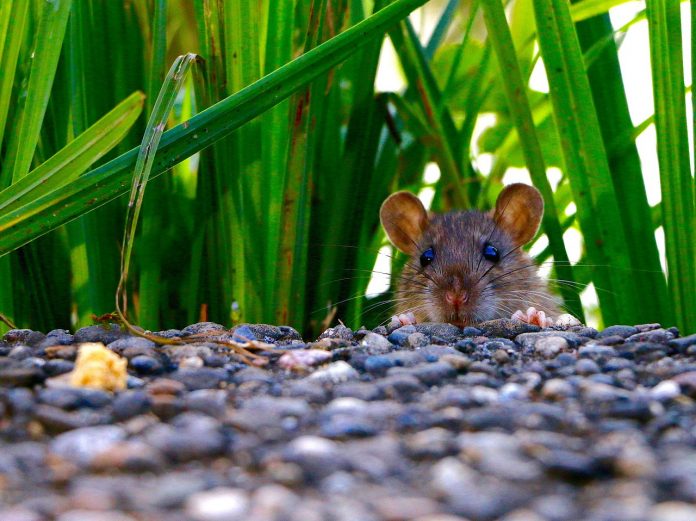I really enjoy living in the country. It’s peaceful, private and close to nature. Instead of John and Carol next door, I’m greeted by four or five deer every morning. It suits me.
They go about their business, and I mine. We share space without needing to come up with any on-the-spot pleasantries. I drink my coffee, watching them eat the last of the apples from the tree in my backyard, and they feed until they’re ready to move on.
Wildlife make pretty good neighbors, but they don’t make the best roommates. I love watching the deer. I don’t share the same fondness for the mice that scamper in and out from under the flashing in the corners of the siding on the outside of my house.
Rude rodents
Rodents don’t make good house guests whether they are inside or outside. They dig in flower beds; cause damage to buildings, electrical wiring, vehicles, boats, tools, tarps, linens, paper products, insulation and so much more; they poop everywhere; they spread diseases and they get into any sort of food — birdseed, animal feed, dog food, cat food, human food and anything close to being edible. They are also known for contaminating the food they don’t consume.
However, at this time of year, many homeowners don’t have a choice on sharing their space. Rats, mice, voles, chipmunks, squirrels and other rodents are looking for a place to hunker down for the winter. Your house, barn or outbuilding might be an ideal space if it provides a cozy nesting spot, nesting materials, water and a nearby food source.
Incidentally, once they’ve settled in they’re difficult to get rid of. Most rodents won’t go very far from their nest, and come spring, will begin reproducing in mass. The best way to avoid a problem is to put up a solid line of defense.
Rodent-proofing your house and buildings
Your first line of defense is sealing off any openings bigger than 1/4 inch to exclude rodents looking for a place to overwinter. You should examine your house and any other buildings at least once a year for entryways.
Copper mesh, hardware cloth and silicone sealant are rodent-proof materials you can use to seal potential entrances. Seal cracks in building foundations and openings for pipes, vents and utilities with metal or concrete. Larger gaps around pipes can be eliminated by using steel wool and caulk or mortar. If you notice even larger openings use aluminum flashing or 1/4-inch wire mesh to seal them. Additionally, make sure doors, windows and screens fit tightly and consider installing door sweeps.
Maintain sanitation inside and outside buildings
In other words, don’t make your home or buildings any more inviting than they already are. By allowing grown up vegetation, debris or food sources such as open garbage or spilled animal feed, you’re offering ideal conditions for rodents looking for a place to overwinter.
Rodents don’t like to be exposed, so cleaning up outside will deter them. You should get rid of loosely piled building materials, trash and plant debris to eliminate food sources, nesting materials and nesting sites. Likewise, firewood should be stored away from your home and outbuildings.
Cleaning up is just as important inside your home. Start by reducing clutter, especially clutter that can be used as nesting material — old newspapers, mail, boxes. Next eliminate food sources by taking out trash regularly, storing food and pet food off the floor and in containers with fitted lids and by cleaning up crumbs and spills quickly when they occur. Additionally, store gardening supplies that can provide a source of food — grass seed, bulbs and bone meal — in rodent-proof containers.
Lastly, make sure you don’t have any leaky faucets or pipes inside or outside your home. Rodents rely on these unintentional, but convenient water sources for survival during the winter.
Sanitation alone won’t eliminate rodents entirely, however, it’s a step in the right direction. A lack of it will attract them and allow them to thrive. By reducing places where they can find food, water and shelter, you limit the opportunity for populations to grow and survive.
Controlling existing populations
Snap traps. Snap traps are effective for eliminating small rodent populations indoors and outdoors. Because some rodents are distrustful of anything new in their environment for the best results you should place unset, baited traps out for 4-5 days, so they can get used to them and take the bait without any threat. Once all the baits have been taken from the traps, collect to rebait, set and put them back out. Both nesting material, such as cotton balls or cloth, and food, such as peanut butter or seeds, will work as bait. Be sure to set your traps in dark corners and against walls where rodents move about undetected.
Poisons. Plenty of poisons to eliminate rodents exist; however, you should use caution when placing these out, especially if you have children or pets. While direct contact is a concern, secondhand contact is also possible. A cat can become poisoned secondhand by a rodent that has ingested poison. Additionally, you run the risk of a poisoned rodent dying inside your wall, or in another inconvenient place, after it’s ingested the poison and returned to its nest.
Glue traps. Although they are nontoxic, they’re not the best traps to use. Generally, the rodent will still be alive when you check these traps, which means having to deal with it. On the other hand, if you’re lucky enough to not have to deal with a live rodent stuck in one, it probably had a long-drawn-out death.
Box traps. Traps used to capture the rodent to release elsewhere generally aren’t a good idea. As I mentioned above, most rodents can’t survive very far from their nesting area and won’t have a good chance of survival released elsewhere. On top of that, you again risk exposure to the animal as it’s still alive.
Noise machines. Although they may deter rodents initially, they will get used to the sound in a matter of days making this control method relatively ineffective.
Predators. Cats are effective for controlling small rodent populations; however, for larger infestations, they will not be able to catch them as fast as they multiply.













I used poison in the sheep barn and the rodents multiplied.
I work at a University and every time a student saw a black snake they wanted it removed.
I stopped using poison and started taking the black snakes home and putting them in the barn.
Problem solved.